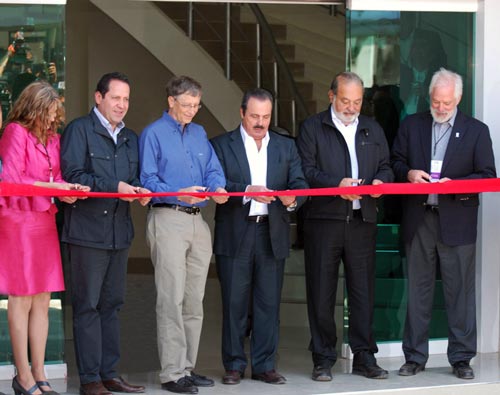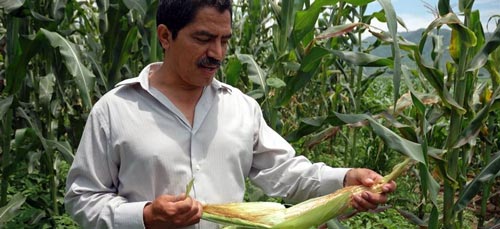Women entering the workforce raises wheat consumption
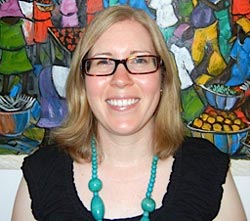 Nicole Mason is an assistant professor of International Development at the Department of Agricultural, Food, and Resource Economics at Michigan State University.
Nicole Mason is an assistant professor of International Development at the Department of Agricultural, Food, and Resource Economics at Michigan State University.
Currently on long-term assignment with the Indaba Agricultural Policy Research Institute in Lusaka, Zambia, Mason completed her PhD in Agricultural Economics at MSU in August 2011. Her research focuses on various dimensions of agricultural input and output subsidy programs in Africa, including political economy aspects as well as program effects on smallholder farmer behavior, poverty, inequality, and maize market prices. Prior to joining MSU, Mason served as a Peace Corps volunteer in Guinea and worked with the Partnership to Cut Hunger & Poverty in Africa. Mason was an invited speaker at the conference “Wheat for food security in Africa: Science and policy dialogue about the future of wheat in Africa,” held in Addis Ababa, Ethiopia, during October 2012, and organized by the Ethiopian Institute of Agricultural Research (EIAR), CIMMYT, ICARDA, IFPRI, the African Union, and WHEAT-the CGIAR research program.
What drew you to international development research and outreach?
During my undergraduate studies at Allegheny College, I took a class entitled “Understanding Environmental Problems in Africa,” taught by the applied economist and returned Peace Corps volunteer Dr. Terrence Bensel. He piqued my interest in Africa and the Peace Corps, and I decided to join the Peace Corps after college. I had the privilege of serving as a volunteer in the rural community of Dalein in the Fouta Djallon region of Guinea in West Africa. I worked with smallholder farmers and women’s gardening cooperatives and saw firsthand the critical role that agriculture plays in the livelihoods of so many rural Africans. These experiences inspired me to pursue a career in international agricultural development research, capacity building, and outreach.
What drew you to work on the trends and drivers of wheat consumption in sub-Saharan Africa?
In the summer of 2007, I worked with colleagues from the Food Security Research Project and the Zambia Central Statistical Office to implement an Urban Consumption Survey in four cities in Zambia (Lusaka, Kitwe, Mansa, and Kasama). We interviewed over 2,000 households and asked them about all of the food and non-food items they had consumed in the preceding 30 days. We also visited many food retail outlets in the four cities, including supermarkets, bakeries, small grocers, and roadside and mobile vendors. I was struck by how popular bread and other wheat products were among respondents of all income groups. It was also interesting to see the long queues for bread in the supermarkets and the vendors selling bread at a slight markup right outside the supermarket to people who wanted to avoid the long lines inside. I learned that similar things were happening in other African cities and towns, and decided to work with MSU agricultural economist Thomas S. Jayne and CIMMYT socioeconomist Bekele Shiferaw to delve into the factors driving rising wheat consumption in Africa.
What did you discover?
I expected urbanization to be a key factor driving rising wheat consumption in Africa but surprisingly, our results suggest that after controlling for other factors like GDP, total population, and the prices of bread and products that are complements or substitutes for bread, changes in the percentage of the total population that resides in urban areas don’t have a significant effect on country-level wheat consumption. This was surprising because in most countries in Africa (Ethiopia is an exception), wheat consumption is much higher in urban than in rural areas. We’re still investigating this finding to unpack what is going on. One possibility is that it’s not urbanization per se that drives wheat consumption but rather the demographic and socioeconomic changes that go along with it. These are things like rising incomes and increased labor force participation by women.
What did you observe about gender and wheat consumption in Africa?
A key finding of our study related to gender is that rising labor force participation by women—especially if it rises faster than labor force participation by men—has a significant, positive effect on country-level wheat consumption. We suspect that this is because wheat products (bread, pasta, chapati, etc.) take less time to prepare than many other popular staple carbohydrates like maize meal porridge (called nshima in Zambia and consumed widely in eastern and southern Africa). When women work more outside of the home, they have less time to devote to food preparation and may prefer quicker options like these wheat products.
What types of changes (policy, research, etc.) do you think would help women and families in sub-Saharan Africa?
This is really broad. But in general, I believe women provide most of the labor for agricultural production in Africa but often don’t have much control over the revenue from the sales of products they helped to produce. Women also tend to have less access to productive assets and technologies that could help raise agricultural productivity. Empowering women—for example, through formal education as well as adult education on improved farming practices and business/management skills, improving their access to credit, etc.—is critical not only for improving the well-being of women but also that of their children, families, and communities.
To see the full study on rising wheat consumption in sub-Saharan Africa by Mason, Jayne, and Shiferaw, please visit http://fsg.afre.msu.edu/papers/idwp127.pdf
Published 2013
 A recently-emerged disease in Eastern Africa, maize lethal necrosis (
A recently-emerged disease in Eastern Africa, maize lethal necrosis (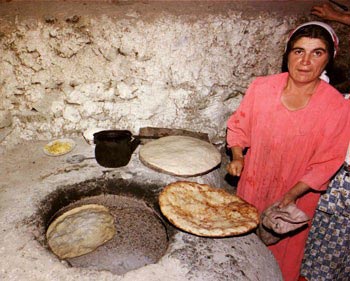 A February 2013 report from
A February 2013 report from 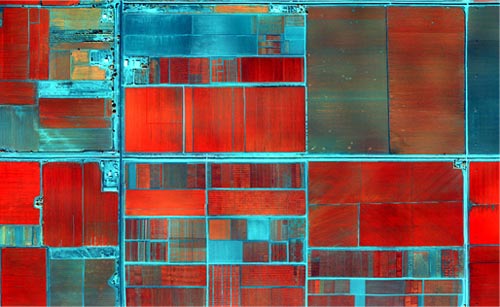
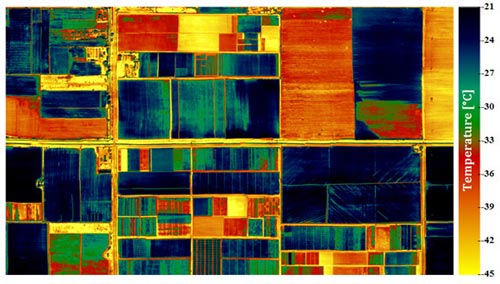
 During 4-8 February 2013, stakeholders of the Water Efficient Maize for Africa (
During 4-8 February 2013, stakeholders of the Water Efficient Maize for Africa (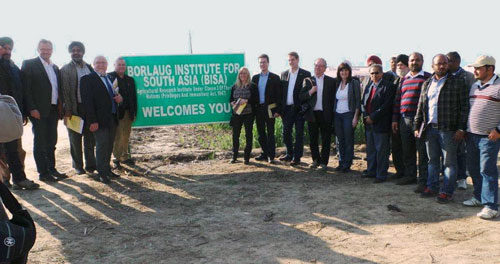 On 6 February 2013, the Borlaug Institute for South Asia (
On 6 February 2013, the Borlaug Institute for South Asia (
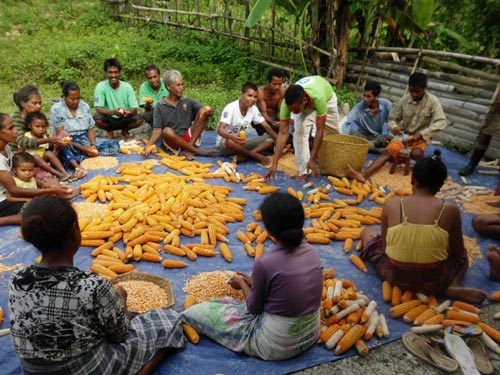 In Timor-Leste, maize is the main staple crop grown by 88% of farming households. However, availability of quality seed of improved maize varieties is a major bottleneck for enhancing crop production and productivity. Experiences gained through the
In Timor-Leste, maize is the main staple crop grown by 88% of farming households. However, availability of quality seed of improved maize varieties is a major bottleneck for enhancing crop production and productivity. Experiences gained through the 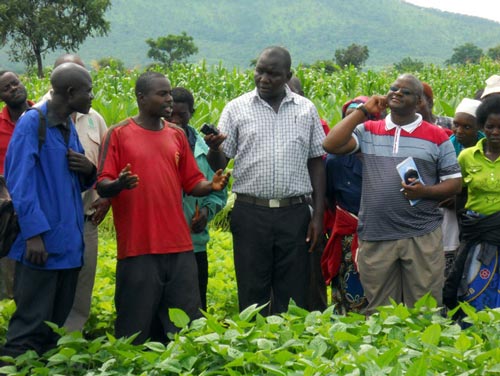 In rural areas surrounding Chipata in eastern Zambia, tobacco, cotton, and maize seem to dominate the agricultural landscape. If you look closer, you will also see smaller fields with groundnuts, cowpeas, soybeans, and sunflowers. But there is yet another dimension of diversity: the different growth stages and (inadequate) fertilization levels of the crops have resulted in a patchwork of yellow to deep green fields of many sizes and shapes, with various degrees of weed infestation. In this smallholder farming area with an average annual rainfall of more than 1,000 mm, it is neither easy to stay ahead of the weeds on all fields, nor to buy enough fertilizer for a healthy crop.
In rural areas surrounding Chipata in eastern Zambia, tobacco, cotton, and maize seem to dominate the agricultural landscape. If you look closer, you will also see smaller fields with groundnuts, cowpeas, soybeans, and sunflowers. But there is yet another dimension of diversity: the different growth stages and (inadequate) fertilization levels of the crops have resulted in a patchwork of yellow to deep green fields of many sizes and shapes, with various degrees of weed infestation. In this smallholder farming area with an average annual rainfall of more than 1,000 mm, it is neither easy to stay ahead of the weeds on all fields, nor to buy enough fertilizer for a healthy crop.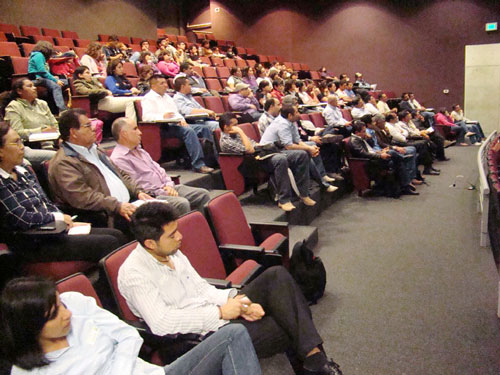 To discuss possible expansion of
To discuss possible expansion of 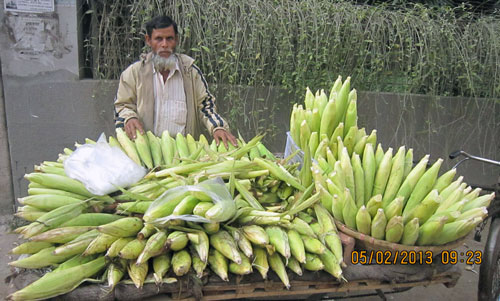 While maize is an important cereal crop in Bangladesh – third only to rice and wheat in terms of cultivated area and second to rice in terms of production – it has not been widely used for human consumption. To discuss filling this gap, CIMMYT-Bangladesh and Bangladesh Agricultural Research Institute (
While maize is an important cereal crop in Bangladesh – third only to rice and wheat in terms of cultivated area and second to rice in terms of production – it has not been widely used for human consumption. To discuss filling this gap, CIMMYT-Bangladesh and Bangladesh Agricultural Research Institute ( On 13 February 2013, CIMMYT inaugurated a new US$ 25 million research complex at its headquarters in El Batán. The new advanced bioscience research facilities, 45 kilometers (20 miles) from Mexico City, marked its grand opening to a crowd of more than 100 invited guests.
On 13 February 2013, CIMMYT inaugurated a new US$ 25 million research complex at its headquarters in El Batán. The new advanced bioscience research facilities, 45 kilometers (20 miles) from Mexico City, marked its grand opening to a crowd of more than 100 invited guests.